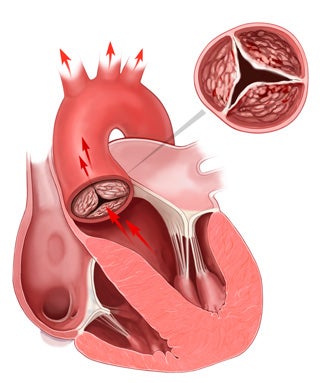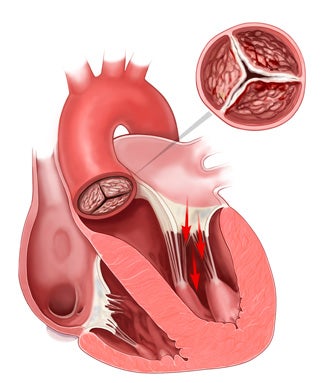
Aortic Stenosis
Aortic Stenosis
The aortic valve is positioned at the top of the left ventricle and leads to the aorta, the major large blood vessel that circulates oxygenated blood to your body. The valve has flaps (called cusps or leaflets) that are forced open when the left ventricle contracts, allowing blood to flow into the aorta. The leaflets then close to prevent the blood from leaking back into the ventricle.
Aortic valve stenosis occurs when calcium deposits on the valve cause the leaflets to become stiff. As the condition progresses, the valve opening narrows, obstructing blood flow and forcing the heart to pump harder.


A stenotic aortic valve is unable to open wide, obstructing blood flow and may fail to close properly
Symptoms of severe aortic stenosis include:
- Chest pain or tightness (angina)
- Feeling faint or fainting upon exertion
- Shortness of breath upon exertion
- Reduced exercise capacity
Remember, however, that heart valve disease often occurs with no outward symptoms and may go undetected.
Untreated severe aortic stenosis often leads to heart failure, with symptoms of fatigue, shortness of breath, swollen ankles and feet, and possible sudden death.
Treatment for severe symptomatic aortic stenosis is essential to prolong your life. There are no medications to reverse the stenosis. Aortic valve replacement is the standard treatment for severe aortic stenosis. Without treatment, a large percentage of the people with severe aortic stenosis who are experiencing symptoms will die within 1-2 years.